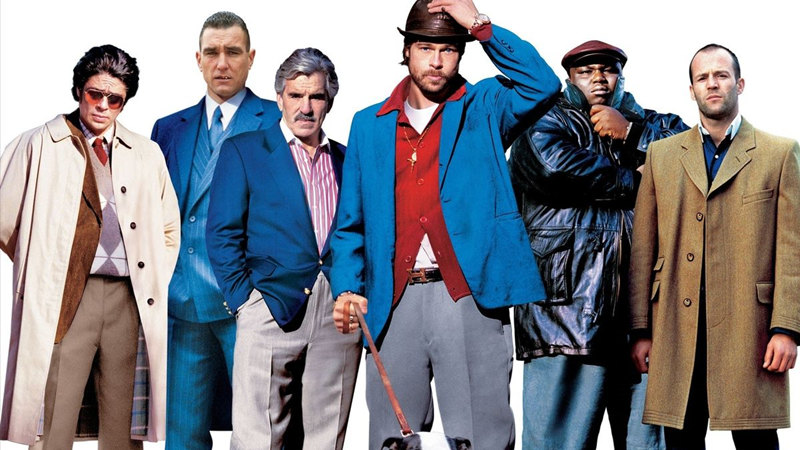With a movie franchise, too often the law of diminishing returns applies. Creative teams lose their energy as a series goes on . . . and on, and sameness creeps in. We’ve seen it with the Barbie franchise, but miraculously (maybe it’s the Pixie Dust?) Disney’s Tinker Bell movies seem to get better with each outing.
What began in 2008 with the introduction of “Tinker Bell”—the main point-of-view fairy in Disney’s attempt to grab a share of the market cornered by Mattel-Universal’s highly successful Fairytopia movies—has returned to the series’ Never Land inspiration with their fourth outing, “The Pirate Fairy” (aka “Tinker Bell and the Pirate Fairy”).
My daughter, who’s part of Disney’s target audience, says that she likes all the sequels—“Tinker Bell and the Lost Treasure” (2009), “Tinker Bell and the Great Fairy Rescue” (2010), “Secret of the Wings” (2012) and this fifth installment in the series—but that the last two are her favorites.
For me, it’s no contest. “Secret of the Wings” offered wonderful graphics and animation, but I found the ending too pat and the logic strained throughout an uncomplicated and emotionally shallow narrative. Like the other sequels, it felt formulaic to me as it hit all the familiar notes—BFFs, opposites joining forces, mess-ups being vindicated, etc.—without adding anything terribly new. “The Pirate Fairy,” on the other hand, feels much more honestly energetic and exuberant, and maybe that’s what the addition of a scurvy (but comical) bunch of pirates does for a film.
Disney animators had some fun with this one, coloring mostly within the lines of the Pixie Hollow movies but slipping outrageously outside the margins every now and then as they offer a rollicking prequel to “Peter Pan.” If Disney doesn’t come up with a pint-sized pirate theme-park ride featuring the new zesty song “The Frigate That Flies,” they’re missing the boat. The song will have you waving imaginary tankards of ale and smiling as you admire the animation of the brotherhood—especially a concertina-playing cook who provides much of the comedy.
If you know “Peter Pan,” there’s also fun to be had in the recognition of elements that will surface later in the Disney classic (or rather, since this is a prequel, surfaced in 1953). Especially appealing is the crocodile, a mere hatchling in “The Pirate Fairy” who imprints on one of the fairies.
Mae Whitman returns as the voice of Tinker Bell, but she shares star billing with Christina Hendricks, who plays Dust Keeper fairy Zarina—an ambitious, misunderstood little thing who ends up leaving Pixie Hollow with the all-important Blue Pixie Dust needed to make the gold dust that keeps everyone airborne and goes to join the pirates at Skull Rock. Captain Hook is a clean-shaven young man named James (Tom Hiddleston), who pretends to be a cabin boy and gets the pirates to elect Zarina their captain as part of a plan to get her to use the Blue Fairy Dust to make the Gold Pixie Dust so they can make their ship fly. Can Tinker Bell and the other fairies get to Zarina in time and convince her to come back to Pixie Hollow, or is she too entrenched now in a life of piracy?
With “The Pirate Fairy,” Disney manages to incorporate the best of both worlds. There’s still plenty of fairy activity, but the pirate plot balances what in previous films has been a Saccharine sweetness and emphasis on all things sparkly that relegated the Tinker Bell series to an audience of little girls. “The Pirate Fairy” is a film for the whole family, and that’s what allusions to a beloved Disney animated classic can do: expand the audience to the kind Disney has always prized.
“The Pirate Fairy” is rated G and has a runtime of 78 minutes. Though it seems short, to expand it further would have been padding. The film we get is satisfying enough.
Video:
“The Pirate Fairy” looks absolutely gorgeous in 1080p, with nice 3-dimensionality, character and object definition, and a palette of colors so rich and vivid that it feels like an assault on the senses. The AVC/MPEG-4 transfer is a good one, too, with no flaws that I can see or hear. “The Pirate Fairy” is presented in 1.78:1 widescreen.
Audio:
The featured audio is a crisp and robust English DTS-HD MA 7.1 that really fills the room with sound, especially on the songs or crisis scenes, as when the fairies take a plunge down a leaf slide. The bass may not rumble, but it still has a nice presence. Additional audio options are French and Spanish Dolby Digital 5.1, with subtitles in English SDH, French and Spanish.
Extras:
There aren’t a LOT of bonus features, but the kids ought to like what’s here. And that’s who the bonus features are for: kids. Included is a five-minute wise-guy narrated Croc-u-mentary about crocodiles and imprinting, along with a handful of deleted scenes, sing-along songs, a recording session for “The Frigate That Flies,” and the big bonus feature, “Second Star to the Right: The Legacy of Never Land,” which offers the conceptual lowdown on the imaginary place.
Bottom line:
Rumor has it that this film is getting a limited release, but “The Pirate Fairy” is good enough to have opened in theaters instead of going direct to home video. It’s wonderfully animated, packed with energy, and full of fun references to the 1953 film “Peter Pan.” If I could give this a 7.5, I would. I suspect it will get more replays in the average household than previous Tinker Bell movies.


